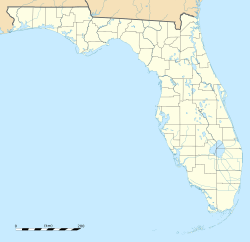Estiffanulga, Florida facts for kids
Quick facts for kids
Estiffanulga, Florida
|
|
|---|---|
|
Unincorporated community
|
|
| Motto(s):
Estiffanulga is the oldest continually occupied settlement along the Apalachicola River with a written history of more than 400 years. The word;"Estiffanulga" translates from Creek to mean - "All peoples bones".
About the time of the American revolutionary war, the bends and meanderings of the river at Estiffanulga gave shelter to pirate William Augustus Bowles, who sailed to and from Havana, Cuba and Nassau, Bahamas as well as Pensacola, Florida with commerce and bounty. Bowles became a respected Chieftain of the Creek/Cherokee nation who inhabited the area and had 2 Creek wives at the same time. He schemed to represent the Indians in fair trade with the Spanish, French and British monarchy. Before 1900; Riverboats routinely carried passengers from the Gulf of Mexico North to Columbus, GA. They stopped for an evening meal of fish which were confined in corals at Estiffanulga for their dining pleasure - perhaps the earliest record of farming fish. |
|
| Country | United States |
| State | Florida |
| County | Liberty |
| Elevation | 59 ft (18 m) |
| Time zone | UTC-5 (Eastern (EST)) |
| • Summer (DST) | UTC-4 (EDT) |
| Area code(s) | 850 |
| GNIS feature ID | 305641 |
Estiffanulga is a small, unincorporated community located in Liberty County, Florida, in the United States. An unincorporated community means it's a place with a shared identity but without its own local government. It's known for its long history along the Apalachicola River.
Contents
Estiffanulga's Rich History
Estiffanulga is one of the oldest places along the Apalachicola River where people have lived continuously. Its history goes back more than 400 years. The name "Estiffanulga" comes from the Creek language. It means "All peoples bones." This name hints at the deep history and many people who have lived there over centuries.
Early River Trade and Life
The Apalachicola River was very important for travel and trade in the past. Before the 1900s, large riverboats often traveled from the Gulf of Mexico north to Columbus, Georgia. Estiffanulga was a common stop for these boats. Passengers would often enjoy an evening meal of fresh fish. These fish were kept in special enclosures, almost like early fish farms. This might be one of the first records of fish farming in the area.
William Augustus Bowles: A Unique Figure
Around the time of the American Revolutionary War, Estiffanulga's winding river bends offered a safe place for a man named William Augustus Bowles. He was known for sailing between Havana, Cuba, Nassau, Bahamas, and Pensacola, Florida, for trade.
Bowles became a respected leader among the Creek and Cherokee Native American nations who lived in the area. He even had two Creek wives at the same time. He worked to help the Native Americans trade fairly with the Spanish, French, and British governments. He was a very interesting person who played a big role in the region's history.
Notable People from Estiffanulga
Estiffanulga has been home to interesting people. One notable resident was Glenn E. Summers (1925-2020). He was a respected judge, a lawyer, and a politician. People like him helped shape the laws and communities in Florida.


